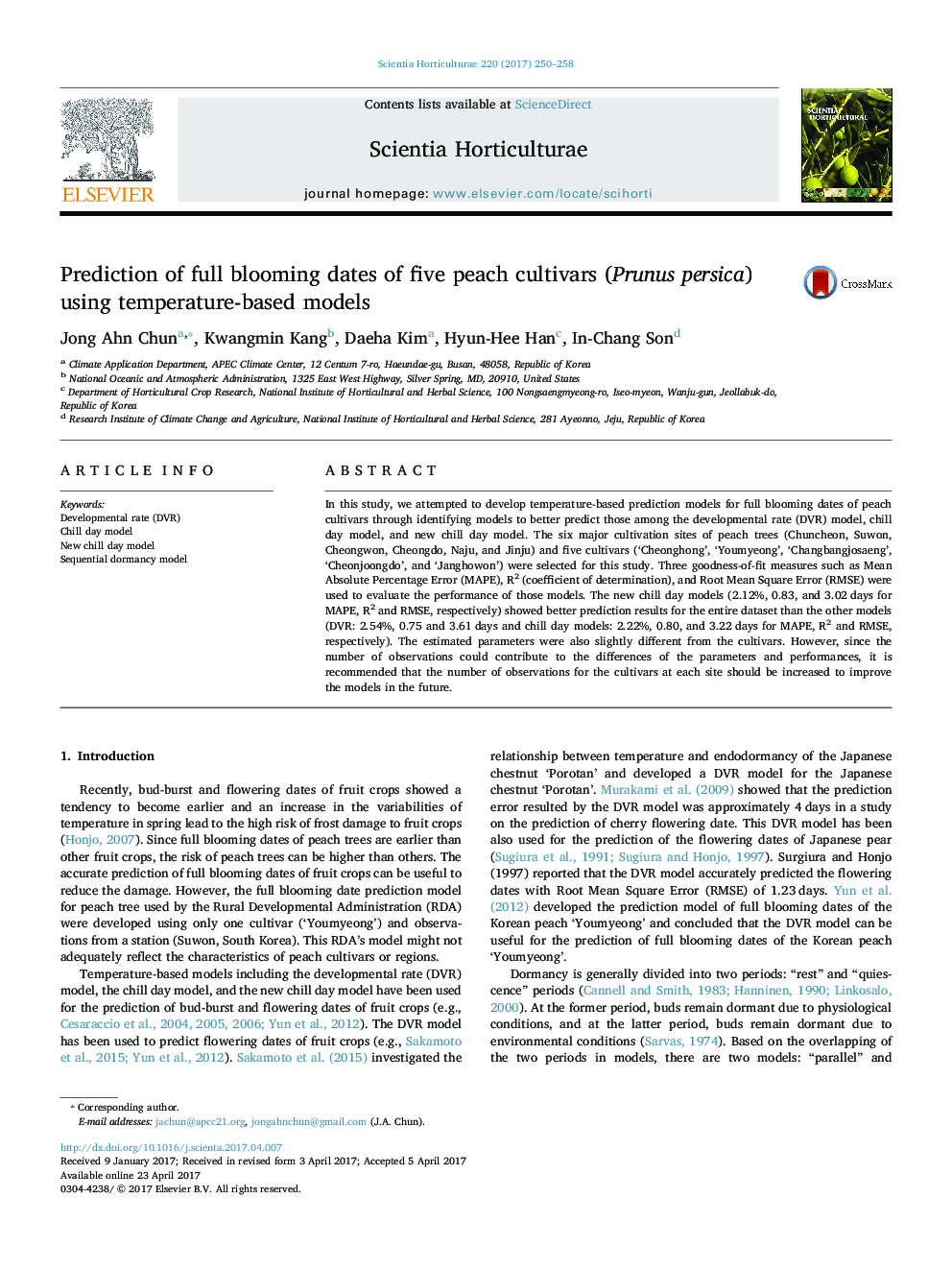| کد مقاله | کد نشریه | سال انتشار | مقاله انگلیسی | نسخه تمام متن |
|---|---|---|---|---|
| 5769626 | 1628778 | 2017 | 9 صفحه PDF | دانلود رایگان |

- Temperature-based models can be useful for full blooming date prediction.
- The DVR model tended to underpredict flowering dates of fruit trees.
- The new chill day models better predict flowering dates than the chill day model.
In this study, we attempted to develop temperature-based prediction models for full blooming dates of peach cultivars through identifying models to better predict those among the developmental rate (DVR) model, chill day model, and new chill day model. The six major cultivation sites of peach trees (Chuncheon, Suwon, Cheongwon, Cheongdo, Naju, and Jinju) and five cultivars ('Cheonghong', 'Youmyeong', 'Changbangjosaeng', 'Cheonjoongdo', and 'Janghowon') were selected for this study. Three goodness-of-fit measures such as Mean Absolute Percentage Error (MAPE), R2 (coefficient of determination), and Root Mean Square Error (RMSE) were used to evaluate the performance of those models. The new chill day models (2.12%, 0.83, and 3.02Â days for MAPE, R2 and RMSE, respectively) showed better prediction results for the entire dataset than the other models (DVR: 2.54%, 0.75 and 3.61Â days and chill day models: 2.22%, 0.80, and 3.22Â days for MAPE, R2 and RMSE, respectively). The estimated parameters were also slightly different from the cultivars. However, since the number of observations could contribute to the differences of the parameters and performances, it is recommended that the number of observations for the cultivars at each site should be increased to improve the models in the future.
Journal: Scientia Horticulturae - Volume 220, 16 June 2017, Pages 250-258